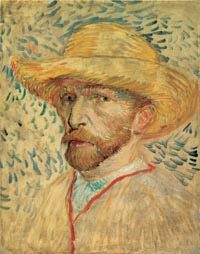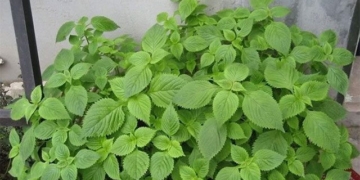The artworks of Vincent Van Gogh, particularly during the last two years of his life, are noted for their groundbreaking contributions to painting. However, for scientists, these paintings are captivating due to their dominant use of yellow, the frequency of color halos, and the irregular pupil sizes in his self-portraits.
Unusual Paintings
 |
Van Gogh (Image: studioesseci/VNE) |
Van Gogh’s use of vibrant yellow in his paintings has led to various interpretations regarding his condition of seeing everything in yellow (xanthopsia). Almost all his works feature a yellow background, as if yellow dominates the space while Van Gogh layers sunbeams onto his creations. Was he perhaps overly comfortable with the use of yellow, or did he employ this color to express the intensity of light?
He wrote to his sister: “You should understand that the nature of this southern land cannot provide an accurate answer; for example, the color palette is violet if it originates from the north, it is dominant and ultimately preserved in gray. The current palette is very rich: sky blue, orange-red, bright red, brilliant yellow, bright green, wine red, and violet. It is used passionately in my works and directed towards a true passion. Instead of seeking something that happens before my eyes accurately, I use color liberally to express strongly.”
The concept of color obsession is built from Van Gogh’s passion for yellow: “Now we have the strong heat of glory that cannot be bought; it has made my works… The sun, the light makes it much more beautiful; I can only remember yellow, light yellow, lemon yellow, metallic yellow… How beautiful they are, and I see them more clearly when in the south. The colors here are the midday air during the harvest, in the inherent heat…”
His technique of using color obsession allowed him to express certain sensations, such as “heat being something created by light, very clear on a dark background” and even he described “together with blue and red, they are the passions of humanity”.
Records indicate the existence of color halos around light sources, most notably in the painting Café Terrace at Night, painted in September 1888. Other works such as Garden Café, Starry Night of Saint-Rémy painted in June 1889, and The cypress road in May 1889 also display these halos. These halos are concentric and are not sun rays. Starry Night was painted before Vincent’s first major crisis. It depicts a café near where he lived, a place where he drank and smoked extensively. In a letter to Theo, he described his living space with words “It seems that at night, it is always more vibrant and colorful than during the day… The room is red and dull yellow, with a green billiard table in the middle, and four lemon-yellow lamps emitting orange and sky blue light”. Each gas lamp is a star, surrounded by a halo that is crucial for realism.
In some self-portraits, he appears to have pupils of different sizes. This can be seen in a self-portrait from 1887, where he wears a straw hat, while in another self-portrait with a felt hat, it is less clear. Conversely, this phenomenon is not observed in other self-portraits from his time in Arles. It is also not evident in the figures surrounding him in those paintings. Could this phenomenon be a result of special lighting?
Glaucoma May Be the Cause
According to FW Maire, Van Gogh may have suffered from subacute or chronic glaucoma. This condition can cause corneal edema due to prolonged intraocular pressure, potentially leading to the sensation of halos around light sources. Axial chromatopsia (color vision deficiency) may also occur along with a lack of adjustment when using yellow. The irregular pupil manifestation suggests a subacute glaucoma rather than chronic glaucoma. However, his works do not indicate any vision loss, and none of his family members had glaucoma. On the other hand, if the halo sensation was real, it could also be present in other conditions unrelated to glaucoma.
In addition to glaucoma, several other pathological hypotheses could explain Van Gogh’s unique paintings: corneal dystrophy, cataract, digitalis poisoning, and neuropsychiatric disorders with hallucinations or alcohol addiction.
Corneal dystrophy only explains the halo sensation but does not lead to yellow chromatopsia or irregular pupil appearance.
Cataracts may lead to all the aforementioned symptoms. Chromatopsia is a classic symptom of cataracts. The sensation of halos is also common in this condition. Irregular pupils are an inconsistent symptom of cataracts; their presence merely suggests an issue of imbalance. Eyes with cataracts often exhibit strong pupil constriction when exposed to bright light to enhance useful vision. The dim stars in his paintings could be explained by cataracts. Van Gogh was only 35 when he painted these, making it hard to accept the cataract hypothesis, but alcohol abuse could have caused the condition to develop earlier than usual.
Digitalis poisoning has been proposed concerning Van Gogh for three reasons. Firstly, in the painting Doctor Gachet, he depicted foxglove (the plant used to extract digitalis). Secondly, he may have been treated with digitalis for epilepsy by doctors Rey, Urpar, and Peyron while hospitalized in Arles and later in Saint-Rémy. Furthermore, digitalis poisoning seems to align closely with his unique paintings, if not suggesting behavioral disorders. However, his notes do not indicate he was treated with digitalis, apart from the implication in the painting Doctor Gachet, as mentioned. Other doctors were also uncertain about whether he had epilepsy and did not mention digitalis use. They advised him on hygiene and to give up alcohol and tobacco. In Dr. Urpar’s certification, it is noted: “Vincent Gogh, 36 years old, suffers from obsession with paranoid symptoms for 6 months…”. The irregular pupil phenomenon might be observed during the 1887 starry night, with strong yellow use beginning in early 1888, and halos in the painting Starry Night around late 1888. However, Van Gogh only entered a mental hospital in December 1888 after the incident of the ear-cutting painting. All these records support the hypothesis of digitalis poisoning in him?
The psychiatric disorder is suggested because he experienced abnormal vision and saw objects in reverse. These events hint at early dementia, obsessive depression, brain tumors…
It is also essential to mention that Van Gogh’s addiction to alcohol and tobacco could play a role in his abnormal vision. He drank excessively upon arriving in Arles. Later, when befriending Paul Gauguin, they shared a common interest in alcohol. When analyzing the painting Self-Portrait with Ear Cut, it is thought he may have suffered from delirium. Behavioral disorders and agitation suggest chronic poisoning. The absinthe he often consumed contains thujone, which, in acute poisoning, can cause colorful halo sensations, blurred vision, confusion, sensory reduction, and hallucinations.
(Translated based on The Eye Diseases of Historical Figures in France) Vincent Van Gogh.
Dr. Hoàng Cương, Central Eye Hospital




















































